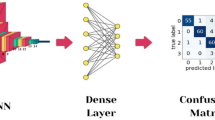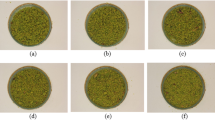Abstract
Identification of adulteration in food products is a challenging task. This paper presents a deep convolutional neural network (CNN)-based classification model for classification between adulterated and unadulterated turmeric powder. Metanil yellow is used as adulterant in this work. The consolidated results show that the presented CNN model can provide up to 98.5% classification accuracy. Therefore, the presented computer vision technique can be a possible alternative approach to adulterant identification in turmeric powder.
Access this chapter
Tax calculation will be finalised at checkout
Purchases are for personal use only
Similar content being viewed by others
References
Dhakal, S., Chao, K., Scimidt, W.: Evaluation of turmeric powder adulterated with Metanil yellow using FT-Raman and FT-IR spectroscopy. J. Foods. 5, 36 (2016)
Kar, S., et al.: FTNIR spectroscopy coupled with multivariate analysis for detection of starch adulteration in turmeric powder. Food Addit. Contam. Part A (2019). https://doi.org/10.1080/19440049.2019.1600746
Mathieu, M., Henaff, M., LeCun, Y. Fast training of convolutional networks through ffts. In: Proceedings of the International Conference on Learning Representations (ICLR) (2014)
Shai, B.-D., Shai, S.-S., Understanding Machine Learning: From Theory to Algorithms. Cambridge University Press (2014)
Martín, A., et. al.: TensorFlow: Large-scale machine learning on heterogeneous systems (2015). Software available from tensorflow.org
Chollet, F.: Keras. https://github.com/fchollet/keras (2015)
Buckland, M.K., Gay, F.: Confusion matrix visualization, Intelligent information processing and web mining. In: Advances in Soft Computing, 25. Springer, Berlin, Heidelberg (2004)
Author information
Authors and Affiliations
Corresponding author
Editor information
Editors and Affiliations
Rights and permissions
Copyright information
© 2021 The Author(s), under exclusive license to Springer Nature Singapore Pte Ltd.
About this paper
Cite this paper
Mandal, D., Chatterjee, A., Tudu, B. (2021). Convolution Neural Network-Driven Computer Vision System for Identification of Metanil Yellow Adulteration in Turmeric Powder. In: Hassanien, A.E., Bhattacharyya, S., Chakrabati, S., Bhattacharya, A., Dutta, S. (eds) Emerging Technologies in Data Mining and Information Security. Advances in Intelligent Systems and Computing, vol 1286. Springer, Singapore. https://doi.org/10.1007/978-981-15-9927-9_14
Download citation
DOI: https://doi.org/10.1007/978-981-15-9927-9_14
Published:
Publisher Name: Springer, Singapore
Print ISBN: 978-981-15-9926-2
Online ISBN: 978-981-15-9927-9
eBook Packages: Intelligent Technologies and RoboticsIntelligent Technologies and Robotics (R0)




